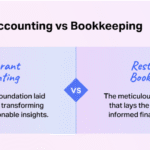RevShare, short for Revenue Sharing, is a popular compensation model in affiliate marketing that aligns the interests of both the advertiser and the affiliate. The revenue share model works by giving affiliates a percentage of the money a merchant earns from sales, no matter how much that is.
Understanding the RevShare meaning is essential for anyone involved in affiliate marketing.
It means affiliates receive a commission based on the real income generated by the consumers they bring in.
In affiliate marketing, the most popular payment types are CPA, CPL, CPI, Revenue Share, and Hybrid. In this article, we’ll guide you about Revshare and how it works in affiliate marketing.
What is Revenue Share (RevShare)?
This means getting a percentage of the money from the selected customers over some time. It offers fixed payments based on lifetime value (LTV). This payment method encourages continuous cooperation between advertisers and affiliates. Unlike cost per action (CPA), which pays a fixed amount for each sale or activity, revenue share represents a percentage of each sale. The revenue share is good for affiliates that can generate high-quality leads and are willing to invest in sustainable product strategies. You should be prepared for the first time without much money.
CPA vs. RevShare
CPA means cost per action is a payment method. In this process, vendors pay affiliates a fixed amount for exact actions, like downloads, installs, trials, sales, or credit card sign-ups. As an affiliate, you’ll earn a commission when each customer completes one of the actions.
In contrast, RevShare generates recurring earnings. Instead of a one-time payment like CPA, RevShare allows you to continue earning rewards as long as the customers you bring in make future purchases from the advertiser.
Pros and cons of RevShare
If you want to know the advantages and disadvantages of Revshare, here are some below:
Pros of Revshare
- Revshare is a long-term earning method. You can continuously earn money as you develop, usually up to 3 years.
- Both advertisers and affiliates benefit from customers’ repeated purchasing. They both profit as the user remains active.
- Revshare earns higher overall earnings as compared to (CPA). If the users stay loyal and keep and remain active, it rewards long-term customer value.
Cons of Revshare
- This method can be caused by delayed payment. You’ll require patience in this procedure.
- There’s a risk of low user retention; if users don’t stay active, your earnings will be limited.
- Tracking and managing long-term user behavior and payments can be difficult.
How do you know if RevShare is right for you?
The RevShare model is great for earning affiliate commissions and generating consistent income. Every time someone you refer makes a purchase, you earn a percentage.
If you are confident in your ability to generate leads and are ready to invest in the long term, choose RevShare. Remember that RevShare is more of a customer acquisition and referral activity for advertisers.
Unlike one-time, smaller commissions, RevShare offers medium- to long-term financial rewards that are more profitable. You should prepare for a slow start, you may not earn money a lot in the first month, but you can earn a lot in the next year.
Conclusion
It is clear how beneficial a RevShare agreement can be to both affiliates and advertisers. Advertisers have a simple advertising channel to attract leads and new consumers, whereas affiliates can gain considerably from the high commission rates on select merchant offers.
To maximize the impact of RevShare profits on your affiliate marketing strategy, make an effort to locate the finest merchants and offers. The better agreements you start with, the higher your earnings will be, and RevShare contracts can help your income streams in the long run.








